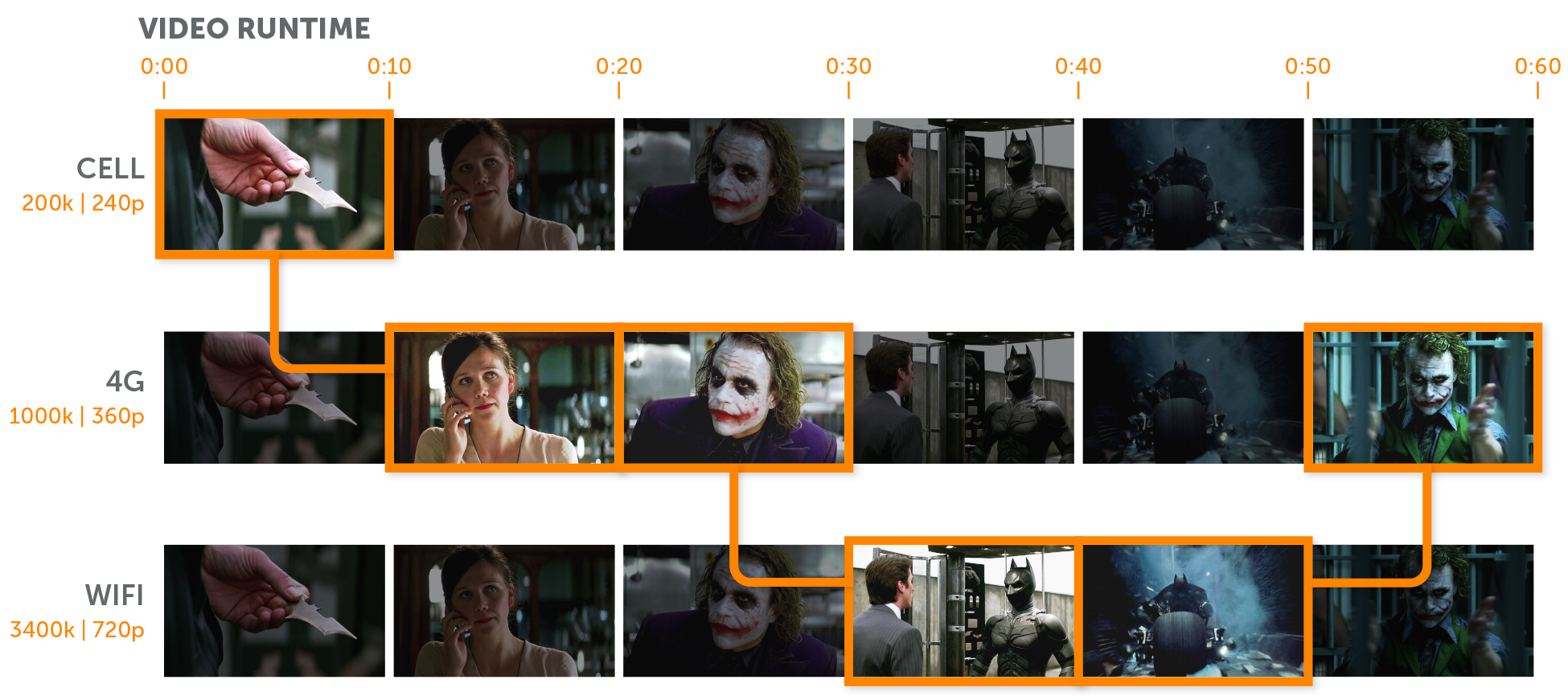The experience rate is becoming increasingly crucial for broadcasters as competitors in the online content invention space heat up. Video streaming technologies have been rapidly enhanced to keep up with the market. Studies show that easing issues have reduced by 41% year on year, while the picture rate has increased by 25%.
Even with these advancements, businesses must often choose between video quality and execution. Bitrate is an essential factor in this. As a result, many commentators are turning to adaptive and multi-bitrate streaming to optimize video brooks to suit viewers’ streaming conditions.
What is Multi-Bitrate Streaming
While adaptive bitrate automatically adjusts to show the best-known version of a video, multi-bitrate streaming works in a little different way. A specific video stream is made public in multiple bitrates in Multi-bitrate streaming. The user must manually establish the best possible video quality from the combination of options available.
MBR makes a few various streams open to you, each with a different bitrate, so you can choose which one nicely suits your network needs from the list of streams (like 240p, 480p, 720p, etc.) If you decide to play a video without setting a bitrate, the system tests which bitrate is best for your network. It will then resume playing the stream at that bitrate even if the internet association or bandwidth fluctuates.
How does Multi-Bitrate Streaming work?
Bitrate is how much data is sent in a given amount of time. In the context of online video streaming, it guides how much bandwidth a video will take while being streamed. This metric is critical for comprehending the tradeoff between viewer quality and version.
Bitrate is commonly estimated in kilobits per second or kbps in the online video space. It impacts every day because users must have an Internet connection that is faster than the video’s bitrate.
Consequently, the user’s video player will be capable of downloading the video fast sufficiently to ensure soft playback.
The problem is that network conditions often change, and connection rates vary by geographical region. For example, delivering video to landmass China, a region with over 1.4 billion people, can be difficult due to congested networks, contributing to average internet rates of less than one megabit per second.
While broadcasters could deliver lower bitrate streams consistent with almost any device or bandwidth capacity, today’s viewers frequently expect much more. Over-the-top (OTT) platforms must also deliver high-definition video on par with traditional TV viewing occasions.
Viewers who can watch high-quality streams will not be interested in watching low-quality videos for long. Video quality is the most critical factor for 67 percent of live stream viewers.
What is Multi-encoding?
Letting you use the same video program for a purpose by utilizing different encoding environments or destinations. Multi-encoding is a component available on the Pearl and Pearl-2 that permits you to make the most of your live occasion production. It is the approach of encoding your assembled live program multiple times. Moreover, there are many websites present on google that will give you multi-bitrate HD encoding videos streaming.
- A record at a high bitrate/frame size and stream at a suitable bitrate/frame size for your capacity.
- Having a low-quality external stream and a high-quality local stream
- To distribute a switched program across multiple.
- Stream multiple bitrates/frame sizes to a single CDN.
- To incorporate your switched live program into another layout.

Adaptive Bitrate vs Multi-Bitrate Streaming: A Guide For Broadcasters
Adaptive Bitrate Video
While you could upload various versions of the video for other users, you’d be able to control their players. Even so, what if the customer switches network types? The player must then switch between them. The player must then change to a different video, but it must begin playing somewhere in the center rather than at the beginning. So, how do you calculate out what byte range to request? Calculate which stream is best for their link and device.
It would be cool if video players could detect changes in network type and available bandwidth. Then switch between different streams transparently until they find the best one.
Which is more essential: the high quality or multi-quality?
The resolution of a video is not the only factor influencing the quality of the experience. If you only stream in high quality. Only users with lightning-fast internet connections will benefit from high-quality streaming. Those with slower internet connections will experience lagging and buffering, ultimately degrading their experience.
Fortunately, multi-quality streaming gives you the finest of both worlds. Viewers with more rapid internet can persist in enjoying high-quality streams. At the same time, those with slow internet can lag and buffer. This permits you to deliver a buffer-free knowledge to all viewers, yet of how fast or delayed their internet is. Multi-bitrate streaming allows the best viewing experience to the most significant number of viewers.
Multi-Bitrate Streaming alternative
People have become more curious about Multi-Bitrate Streaming videos in recent years. Video is the future of the internet. When it comes to video streaming, there is one venue that everyone is familiar with: YouTube. This platform assistance is prevalent, with millions of users and pictures per day. Although live-streaming YouTube has some benefits, it also has some limitations. For professional goals, most businesses prefer alternatives to YouTube.
- Webnexs Live:
- Muvi:
- Flicknexs:
- Brightcove:
- Dacast:
All the above mentioned are the alternative that was easily downloaded Multi-Bitrate Streaming from google. You need to type on google for alternate for the Multi-Bitrate Streaming. You will get lots of websites that contain the Multi-Bitrate Streaming APK that easily be installed on your mobile.
Conclusion
Hosts should not have to decide between QoE and observer compatibility. To achieve your target audience and deliver them with the most acceptable video streaming venture possible. Use video streaming software that helps both Adaptive Bitrate Video and multi-bitrate streaming.